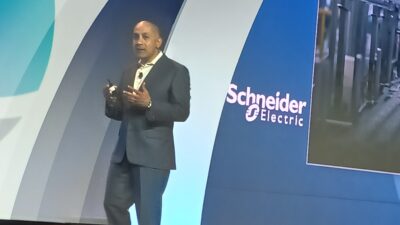A recent article in the Chicago Tribune points out that Navistar International Corp. was able to save engine manufacturing time and costs by automating their factory. I'll accept that. I'll even take the NAM's word that "structural costs" cause a 22% competitive disadvantage for U.S.-based manufacturing companies.
A recent article in the Chicago Tribune points out that Navistar International Corp. was able to save engine manufacturing time and costs by automating their factory. I’ll accept that. I’ll even take the NAM’s word that “structural costs” cause a 22% competitive disadvantage for U.S.-based manufacturing companies.
Navistar and others mentioned in the article that the only way to make up this “perceived” competitive disadvantage and to save jobs is to automate. This I won’t accept. The solution to our problems is not as easy as automating or exporting jobs, nor is it as easy as having our state and federal legislative bodies alleviate “burdens.”
Is automation really needed to make up the “perceived” competitive disadvantage? Do corporations need to beat up their vendors on pricing? Do we need to turn every product into a commodity? I don’t think so.
One primary reason we are at a disadvantage is that we, as a nation, are math and science illiterate. The Trends in International Mathematics and Science Study by the National Center for Education Statistics indicates that U.S. 4thgraders score above the international average. However, our 8thgraders are near average and our 12thgraders are below average. The National Assessment of Educational Progress found, while overall mathematics and science achievement have improved since 1970, only 17% of 12thgraders tested in 2000 scored at the proficient level. Additionally, a 1999 NCES report indicates 41% of freshman at two-year colleges and 22% at four-year institutions are enrolled in remedial math and science classes.
Bayer Corporation’s “Bayer Facts of Science Education IX: Americans’ Views on the Role of Science and Technology in U.S. National Defense” surveyed 1,004 adult men and women age 18 and over who are either U.S. citizens or permanent residents of the United States. The study found only two-thirds of respondents consider themselves to be science literate. And 9 out 10 Americans said they were concerned that today’s students may not have the math and science skills necessary to perform homeland security duties and economic leadership in the 21stcentury.
Here’s an example of how technical illiteracy puts companies at a competitive disadvantage.
In 1998, I taught a fundamentals of pneumatics class at a local community college. Each class started out with a Q&A session about things that happened at work. During one session, a student told of his plant manager placing an air compressor in the boiler room with the plant supply line run through a hole in the roof to a refrigerated air dryer and back through the roof to the plant. The plant manager could not figure out why he couldn’t get rid of water in the airlines and why it cost them so much to produce compressed air.
The answer is simple. Smart design saves money.
Recently, I was asked to review the manufacturing process for a temperature control manufacturer. Reviewing the design, I noticed the company was using a solenoid valve with flying leads, and using conduit to attach extensions to the leads to connect the valve to the control panel. I recommended using a valve with a DIN coil and a lighted, pre-wired connector. This design change reduced material and labor costs 20%. Additional cost savings were realized in customer service and warranty claims. Because of the connectors, surge protection valve coils failed less. The light allowed the staff to troubleshoot and resolve field problems more quickly. And, at $5,000+ per hour to have a plastic injection machine disabled, everyone saves money.
We must begin putting more resources and effort into improving our educational system because smart labor is more efficient labor … in many ways.
The opinions presented in this column are those of the author and not necessarily those of Control Engineering or Reed Business Information.
If you would like to step onto the Soapbox, contact David Greenfield, editorial director, at [email protected]
| Author Information |
| Jeff Klingberg is President/CEO of Mountain Stream Group Inc., a firm that offers communication advice to consumer, business-to-business, industrial, and service companies. |



